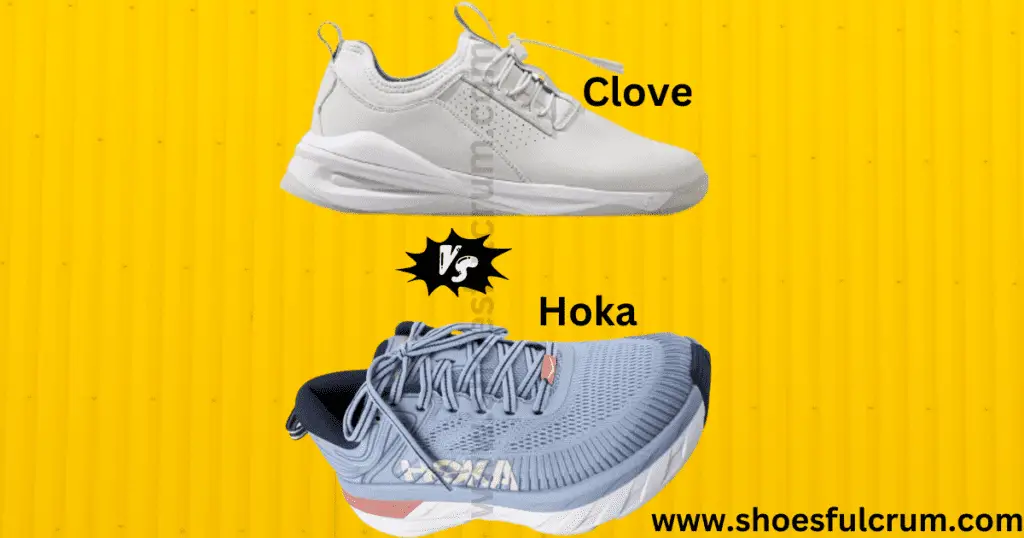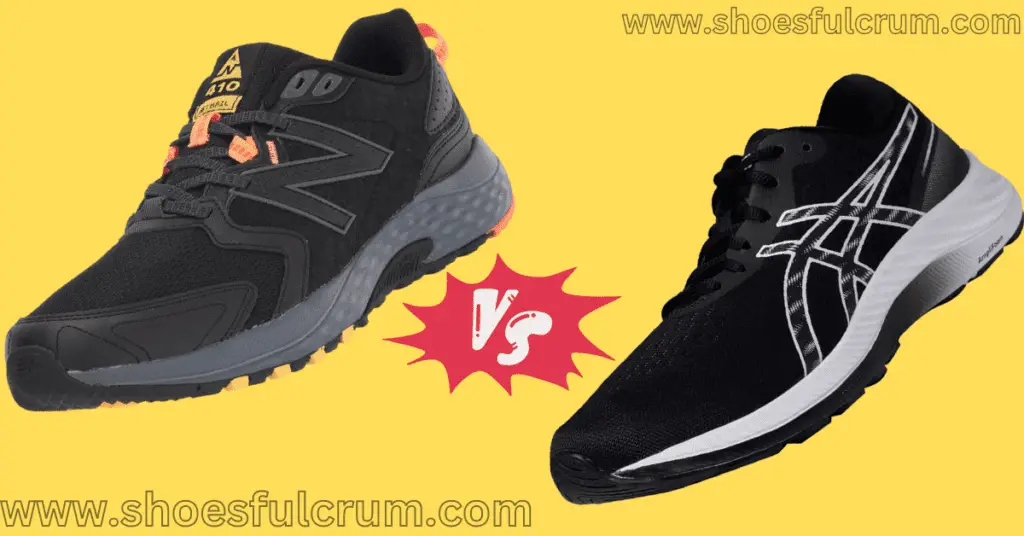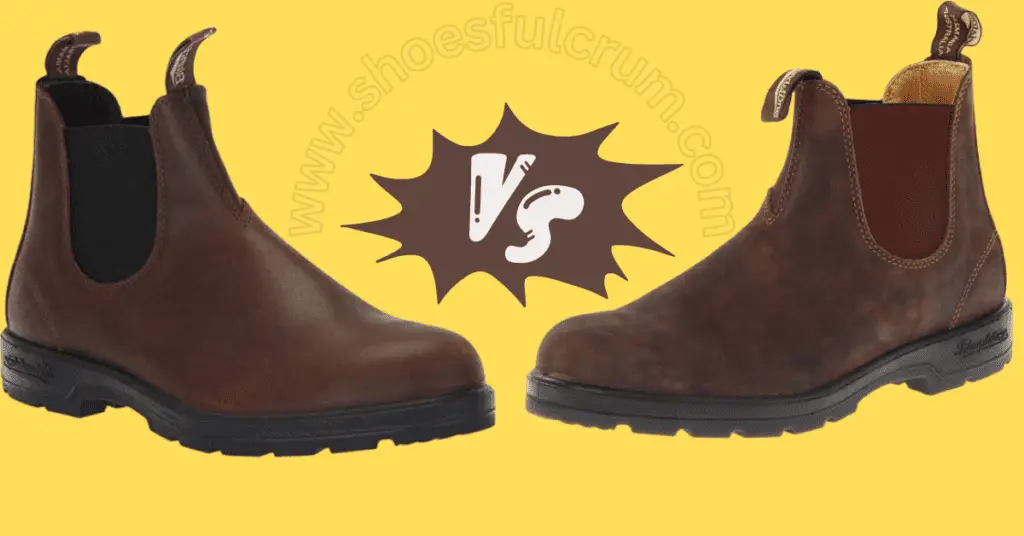Are you on the lookout for the perfect pair of running shoes that can provide you with both comfort and performance?
Well, look no further, because today I’m going to compare two popular shoe brands, Clove and Hoka, and help you make an informed decision.
When it comes to running shoes, finding the right fit is crucial, as it can significantly impact your running experience. Both Clove and Hoka have gained recognition for their innovative designs and advanced technologies, catering to the needs of runners worldwide.
In this article, I’ll explore the features, benefits, and differences between these two brands, ensuring you have all the information you need to choose the ideal pair of shoes that suit your running style and preferences.
So, let’s lace up our shoes and dive into the exciting world of Clove and Hoka, discovering what sets them apart and which one might be the perfect match for you!
Understanding Minimalist Footwear
When it comes to footwear, comfort is key.
As someone who values both style and functionality, I have explored various types of shoes in search of the perfect balance. Recently, I stumbled upon minimalist footwear and was intrigued by its growing popularity.
So, what exactly is minimalist footwear?
In simple terms, it refers to shoes that aim to mimic the natural form and movement of the foot.
These shoes typically have a thin sole and minimal cushioning, allowing for a closer connection between your feet and the ground. The philosophy behind minimalist footwear is rooted in the belief that our feet are designed to function optimally without the need for excessive support or cushioning.
One of the main principles of minimalist footwear is encouraging a more natural and efficient walking or running gait.
By promoting a midfoot or forefoot strike instead of a heel strike, minimalist shoes can potentially reduce the impact and stress on joints and muscles. This can lead to improved balance, strength, and overall foot health.
Can I Run In Clove Shoes?
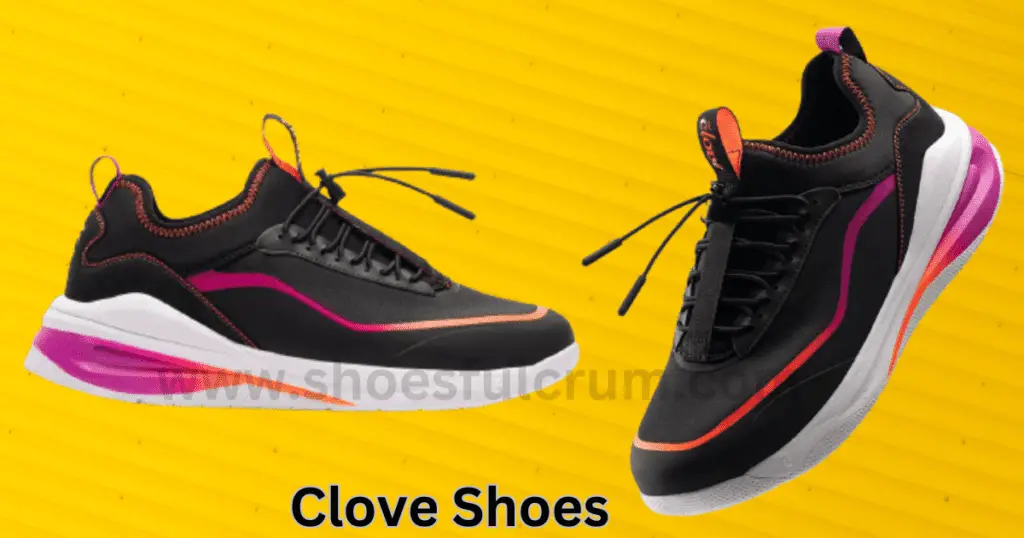
Absolutely! Running in Clove shoes is a fantastic choice for those searching for a more minimalist and natural running experience. Even though Clove shoes are specified for nurses and are primarily designed with the needs of nurses in mind, they can still be suitable for running and other physical activities.
In my experience, walking in Clove footwear is a liberating and invigorating enjoyment. The lightweight layout of Clove footwear lets in a more feel of freedom and connection with the ground.
These shoes are made with materials that prioritize breathability and flexibility, allowing your feet to move naturally and comfortably as you run.
What makes Clove shoes suitable for running is their minimalist approach. They provide a lower heel-to-toe drop in comparison to conventional running shoes, which could help promote a more natural running gait and interact with your foot and leg muscles in a distinctive manner.
The thinner sole of Clove footwear permits for more proprioceptive remarks, giving you a heightened awareness of your body’s movements and the surface you’re running on.
It’s also worth mentioning that running in Clove shoes may require a slight adjustment in your running form. With the reduced cushioning and support, it’s important to focus on maintaining good running mechanics and landing with a midfoot or forefoot strike to absorb impact effectively. This can help distribute the forces more evenly and reduce the risk of injury.
However, keep in mind that everyone is unique, and what works for one person may not work for another. Some runners may find Clove shoes their ideal running companion, while others may prefer different types of footwear. It’s important to listen to your body and determine what feels comfortable and supportive for you.
Also, check out: Hoka Kawana VS Clifton: Which Running Shoe Is Best For You?
History And Background: Clove Vs Hoka
Clove and Hoka, two renowned footwear brands, have made their mark in the industry with their unique offerings. Understanding the history and background of these brands provides valuable insights into their journey, innovation, and achievements.
Let’s delve into the fascinating histories of Clove and Hoka, exploring their origins, key milestones, and contributions to the world of footwear.
Clove
Clove is a brand that has gained significant recognition for its commitment to minimalist design and exceptional comfort.
Clove originated from humble beginnings with a vision to create minimalist footwear that embraced the natural movement of the feet. The brand was founded by a team of passionate individuals who believed in the power of simplicity and functional design.
Since its inception, Clove has achieved several key milestones and garnered a loyal following. The brand’s commitment to quality craftsmanship and attention to detail has set it apart in the competitive footwear market.
One significant milestone in Clove’s journey was the development of its signature Barefoot Series. This collection of shoes was designed to provide a barefoot-like experience while offering protection and support.
The Barefoot Series features a minimalist construction with a thin and flexible sole, allowing for enhanced sensory feedback and natural foot movement.
This innovative approach quickly gained popularity among those seeking a more authentic connection with the ground.
Hoka
Hoka is a brand that has made a significant impact on the athletic footwear industry, offering innovative designs that prioritize cushioning and performance.
The origins of Hoka can be traced back to 2009 when two trail running enthusiasts, Jean-Luc Diard and Nicolas Mermoud, recognized a need for shoes that provided enhanced cushioning without compromising on lightweight design.
They believed that by creating shoes with extra cushioning and a unique rocker shape, they could revolutionize the running experience. This vision led to the birth of Hoka, with the name deriving from the Maori language and meaning “to fly over the earth.”
Since its inception, Hoka has achieved numerous vital milestones and garnered recognition within the running community. The brand’s commitment to innovation and performance has propelled it to the forefront of the industry.
Major Differences: Clove Vs Hoka
To help make the decision-making process easier, here I am providing a detailed comparison table summarizing the key differences between Clove Vs Hoka.
| Features | Clove Shoes | Hoka Shoes |
|---|---|---|
| Fit and Comfort | Lightweight, comfortable, flexible | Cushioned, supportive, versatile |
| Performance | Suitable for running and daily activities | Suitable for running, hiking, and outdoor use |
| Durability | Durable construction | Durable construction |
| Style and Design | Stylish design options are available | Wide range of styles and colors |
| Waterproofness | Generally not marketed as waterproof | Some models offer waterproof features |
| Cushioning | Minimal cushioning | Ample cushioning |
| Arch Support | Limited arch support | Provides support for various foot types |
| Traction | Good traction on various surfaces | Good traction on various surfaces |
| Longevity | Long lifespan with proper maintenance | Long lifespan with proper maintenance |
| Price | Affordable | Range of prices depending on model |
Fit And Comfort: Clove Vs Hoka
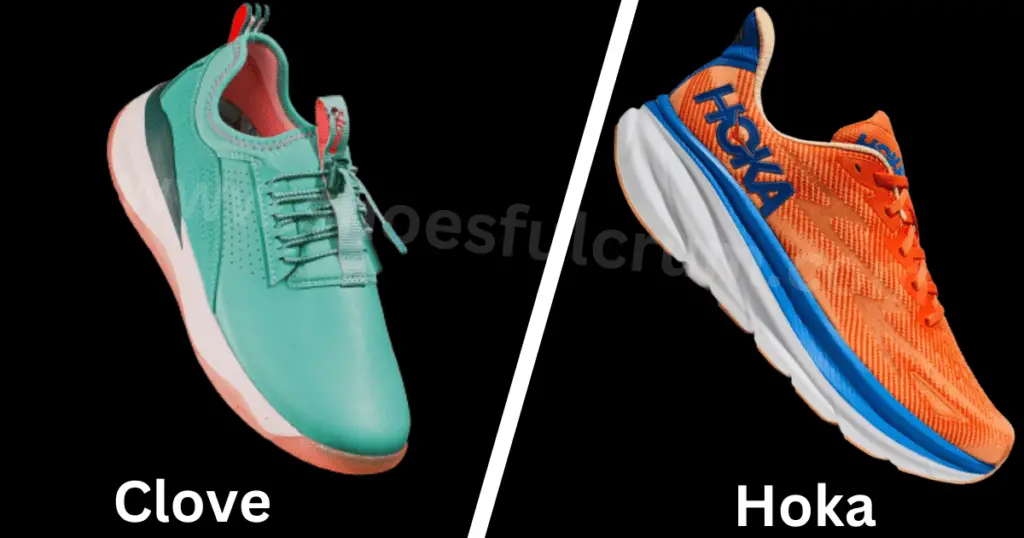
Clove and Hoka have different approaches to fit and comfort, which can be attributed to their respective design philosophies.
Clove Shoes
Clove shoes focus on minimalist principles, aiming to provide a lightweight and flexible feel.
Minimalist Design And Construction
When assessing the fit and comfort of Clove shoes, it is important to consider their minimalist design and construction.
These shoes typically feature a more minimal and snug fit, allowing for a closer connection to the ground. This can be appealing to those who prefer a more natural and barefoot-like experience.
Important Note:
However, it is important to note that the snug fit may not be suitable for individuals with wider feet or those who prefer a roomier toe box.
I would advise you to try on different models and sizes to find the best fit for your foot shape and personal comfort.
Hoka Shoes
Hoka places an emphasis on cushioning and support, aiming to offer maximum comfort and shock absorption.
Cushioning And Support
Hoka shoes are known for their generous cushioning and support features.
They typically offer a more spacious fit, providing ample room in the toe box and midfoot area. This can be beneficial for individuals with wider feet or those who prefer a roomier fit.
The additional cushioning and support in Hoka shoes can also provide enhanced comfort, particularly for longer runs or activities that involve prolonged standing or walking.
Foot Characteristics
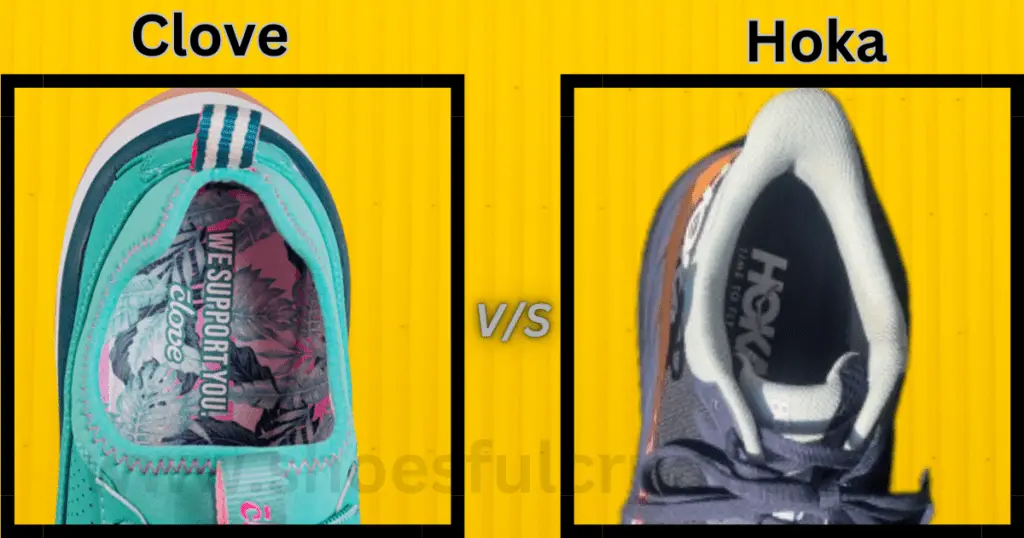
Furthermore, individual foot characteristics can significantly affect the comfort of both Clove and Hoka shoes.
Factors such as arch height, pronation, and foot width can influence how a shoe fits and feels.
High Arch
For individuals with high arches, Hoka shoes, with their supportive features, may provide the necessary stability and cushioning.
Low Arch
On the other hand, individuals with low arches or those who prefer a more minimalistic feel may find the flexibility and freedom offered by Clove shoes more suitable.
Foot Conditions
It is also important to consider any specific foot conditions or issues you may have.
For example, individuals with plantar fasciitis or other related conditions may benefit from the added cushioning and arch support provided by Hoka shoes.
Conversely, individuals who prefer a more minimal and natural feel, or those seeking to strengthen their feet and improve proprioception, may find Clove shoes more aligned with their needs.
Also, check out: Hoka Gaviota VS Clifton: Which Is Best For Road Running?
Design And Technology: Clove Vs Hoka
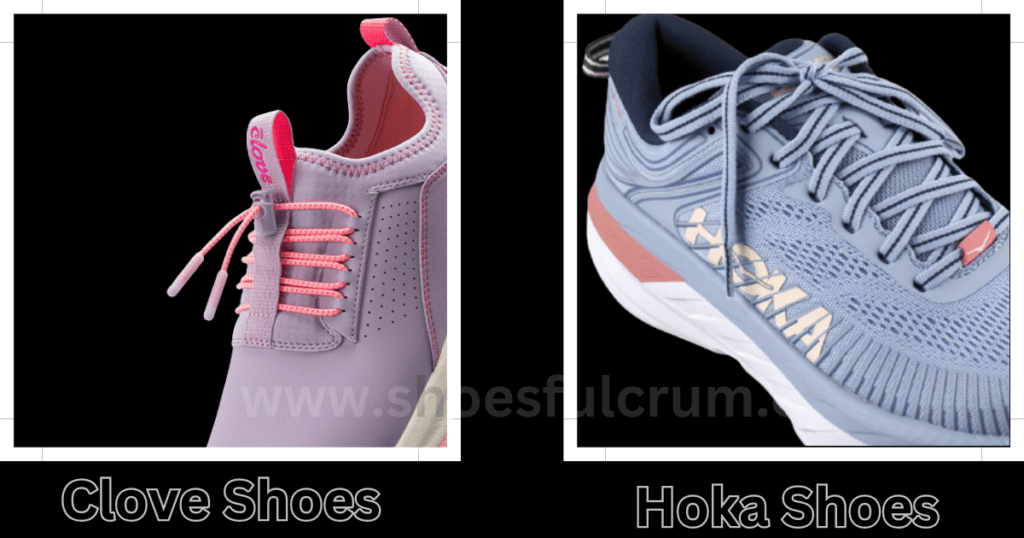
The design and technology employed in footwear play a crucial role in enhancing performance, comfort, and overall user experience.
Clove
Clove places a strong emphasis on the structure of its footwear, ensuring a perfect balance between comfort, flexibility, and natural movement.
Materials
Clove utilizes a variety of materials, such as breathable mesh fabrics and lightweight synthetic overlays, to create shoes that are both comfortable and functional.
These materials are carefully selected to provide optimal breathability, allowing for proper ventilation and reducing the likelihood of discomfort caused by excessive sweating or heat buildup.
Additionally, the lightweight construction of Clove shoes contributes to a more effortless and unrestricted movement, making them suitable for various activities and lifestyles.
Construction Methods
When it comes to construction methods, Clove focuses on creating shoes that prioritize foot flexibility and natural movement.
The brand understands that the human foot is designed to move dynamically, and its shoe designs aim to support and enhance this natural motion. I suggest paying attention to features such as flexible soles and minimalistic overlays when exploring Clove’s footwear options.
Shoe Structure
Clove’s shoe structure often incorporates a thin and flexible sole, which allows for better ground feel and sensory feedback.
This design feature enables your feet to adapt and respond to different surfaces, promoting a more natural walking or running experience.
Whether you’re navigating a rocky trail or strolling along city streets, Clove shoes provide a balance between protection and a barefoot-like sensation.
Hoka
Hoka is renowned for the distinctive shoe structure that sets it apart from traditional athletic footwear.
Unique Design Elements
One of the key design elements that make Hoka shoes stand out is their oversized midsole. This design feature sets Hoka apart from many other athletic shoe brands on the market.
The midsole of Hoka shoes is significantly thicker than traditional running shoes, providing a generous amount of cushioning.
This design approach aims to enhance shock absorption and reduce the impact on joints and muscles during high-impact activities.
Shoe Structure
Hoka’s focus on cushioning is evident in their shoe structure. The extra cushioning in the midsole helps create a plush and comfortable feel underfoot.
Whether you’re running on pavement or tackling rugged trails, the cushioning in Hoka shoes provides a soft landing and minimizes the strain on your feet and lower limbs.
This emphasis on cushioning makes Hoka shoes particularly appealing to those who prioritize comfort during their workouts or daily activities.
Meta-Rocker Technology
Furthermore, Hoka incorporates advanced technology into its shoes to maximize cushioning and shock absorption.
One notable technology employed by Hoka is its Meta-Rocker system.
The Meta-Rocker technology involves a unique geometry in the midsole, which creates a rocking motion as you move. This rocking motion facilitates a smooth transition from heel to toe and promotes a more efficient and effortless stride.
The combination of the oversized midsole and the Meta-Rocker technology in Hoka shoes creates a sensation of being propelled forward. This design feature can help reduce fatigue and enhance running or walking efficiency.
I would highly recommend trying on a pair of Hoka shoes to experience this distinctive sensation firsthand.
Active Foot Frame
Another technology incorporated into Hoka shoes is the Active Foot Frame.
This technology ensures that your foot is positioned deep within the midsole, providing added stability and support.
The Active Foot Frame allows for a secure fit without sacrificing the cushioning and comfort that Hoka shoes are known for.
Outsole And Traction: Clove Vs Hoka
The outsole of a shoe plays a vital role in providing grip and stability, especially when navigating various terrains. Traction refers to the shoe’s ability to grip the ground effectively, ensuring secure footing.
In this section, I will explore the outsole and traction features of Clove vs Hoka to understand their performance on different surfaces.
Clove
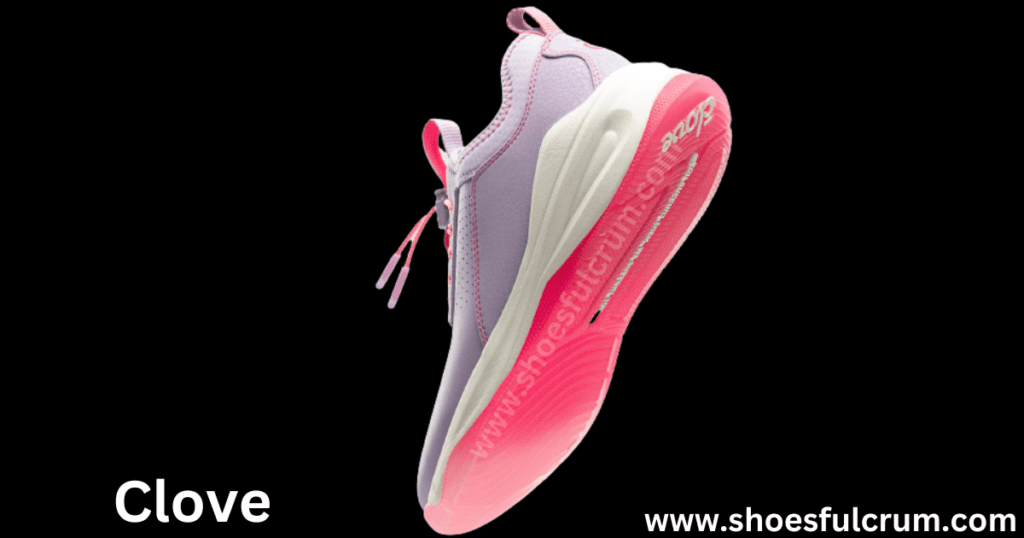
One notable aspect of Clove’s outsole technology is the use of Vibram.
Vibram is a renowned brand known for producing durable and high-performance outsoles. Clove’s partnership with Vibram speaks volumes about its commitment to providing exceptional traction and grip.
Vibram Outsoles
Vibram outsoles are made from a specially formulated rubber compound that offers excellent grip on a variety of surfaces.
Whether you’re traversing rugged terrains or walking on slippery surfaces, the Vibram outsole on Clove shoes provides reliable traction and stability.
I highly recommend paying attention to this feature when considering Clove shoes.
Unique Tread Patterns
The unique tread patterns on Vibram outsoles are designed to optimize grip and channel water and debris away from the sole, ensuring maximum contact with the ground.
This innovative design minimizes the risk of slips and enhances overall traction, allowing you to confidently tackle various terrains and weather conditions.
Durability
Durability is another key consideration when it comes to outsole performance, and Clove shoes excel in this aspect as well.
The Vibram outsoles used in Clove footwear are known for their exceptional durability, making them suitable for long-lasting use.
This durability ensures that your Clove shoes will withstand the demands of your activities, maintaining their grip and performance over time.
Hoka
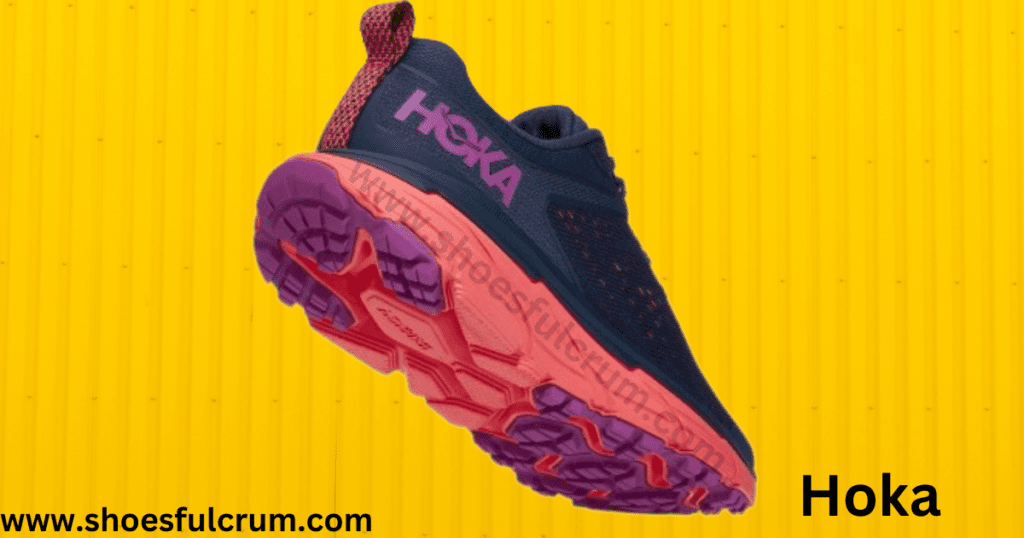
Hoka is a brand known for its commitment to performance and innovation, and its attention to detail in the design of the outsole is no exception.
Understanding the rubber compounds used and the multidirectional lugs employed by Hoka can greatly enhance your traction and stability on different surfaces.
Rubber Compounds
Hoka utilizes high-quality rubber compounds in the construction of its outsoles, which significantly contribute to their performance and durability.
The rubber compounds used are carefully selected to strike a balance between grip and durability, ensuring that you have traction on various terrains while still enjoying long-lasting wear.
This attention to detail ensures that your Hoka shoes can withstand the demands of your activities without compromising performance.
Multidirectional Lugs
The multidirectional lugs on the outsole of Hoka shoes are strategically placed to provide optimal traction on different surfaces.
These lugs vary in shape, depth, and pattern to enhance grip and stability.
For example, deeper lugs are commonly found on trail running shoes to provide traction on loose or uneven terrain, while shallower lugs are often seen on road running shoes to maintain a smooth and efficient stride on paved surfaces.
The multidirectional lugs on Hoka outsoles offer excellent grip in various directions, allowing you to confidently tackle different terrains.
Whether you’re navigating muddy trails, rocky surfaces, or wet pavements, the multidirectional lugs work together to ensure that you maintain traction and control.
I suggest paying attention to the lug design when choosing Hoka shoes, as it can greatly impact your performance and safety during your activities.
Also, check out: Hoka Anacapa VS Kaha: Which Trail Running Shoe Should You Choose?
Durability And Longevity: Clove Vs Hoka
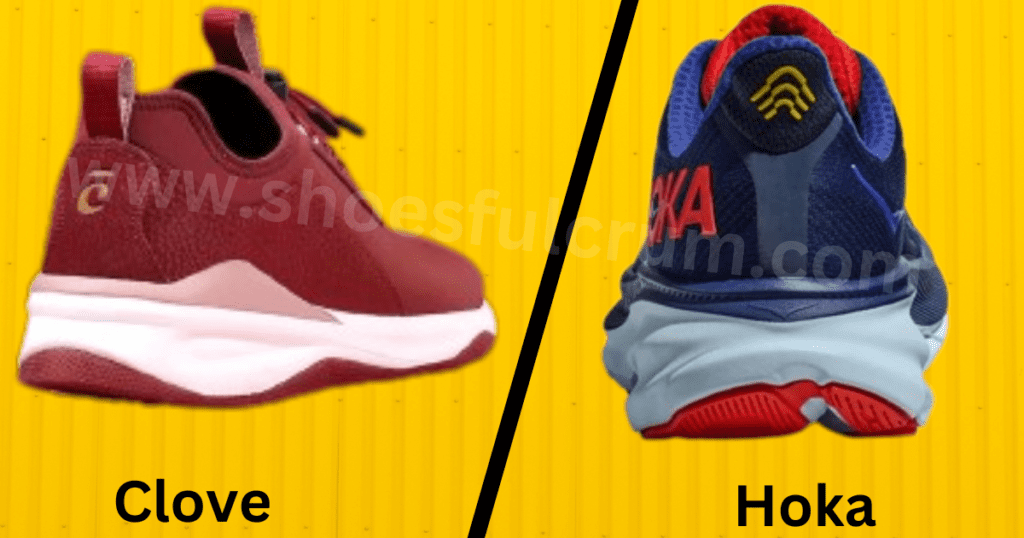
When it comes to evaluating the durability and longevity of footwear, both Clove and Hoka offer shoes that are designed to withstand regular use.
Understanding the factors that influence durability and considering proper maintenance can help you make an informed decision regarding the longevity of these brands’ shoes.
Clove Shoes
Clove shoes, with their minimalist design, tend to have a simpler construction with fewer layers and components. This simplicity can contribute to their overall durability.
Important Note:
However, it is important to note that the minimalist nature of Clove shoes means they may have less padding and protection, which can affect their longevity, particularly in high-impact activities or rough terrains.
Regularly inspecting the shoes for signs of wear and tear, such as fraying threads or sole degradation, can help identify when it’s time to replace them.
Hoka Shoes
Hoka shoes, known for their cushioning and support, often incorporate multiple layers and advanced technologies in their construction.
This complexity can enhance durability and prolong the lifespan of the shoes. The robust materials and reinforced areas in Hoka shoes are designed to withstand the rigors of running, hiking, and other active pursuits.
Important Note:
However, it is important to note that the longevity of Hoka shoes can also be influenced by factors such as the intensity of use, terrain, and individual gait patterns.
Regularly assessing the condition of the shoes and monitoring for signs of wear can help determine when it is time to replace them.
Proper Maintenance
Proper maintenance plays a significant role in preserving the durability of both Clove and Hoka shoes.
I highly recommend following the care instructions provided by the manufacturers, as they often guide cleaning, drying, and storing the shoes.
Generally, I advise to hand washing or spot-clean the shoes using mild soap and water. Avoid using harsh chemicals or abrasive materials that can damage the shoe’s materials or affect their performance.
Additionally, allowing the shoes to air dry naturally after use can help prevent excessive moisture buildup, which can lead to unpleasant odors or accelerated deterioration.
Some models of both Clove and Hoka shoes are machine washable, but it is crucial to refer to the specific care instructions to ensure proper cleaning and maintenance.
Important Note:
It is important to consider that the lifespan of any shoe is also influenced by individual usage patterns.
Factors such as frequency of use, intensity of activities, and terrain encountered can impact the wear and tear on the shoes.
For example, using shoes primarily for high-impact activities like running or hiking on rugged trails may result in more significant wear compared to using them for casual walks or gym workouts on smoother surfaces.
Being mindful of the shoe’s intended use and rotating between multiple pairs can help distribute the impact and extend its lifespan.
Performance And Versatility: Clove Vs Hoka
When comparing the performance and versatility of Clove and Hoka shoes, it is important to consider factors such as responsiveness, stability, and adaptability to different environments.
By carefully assessing these aspects, you can determine which brand offers the performance and versatility you require.
Clove Shoes
Clove shoes, with their minimalist design and emphasis on foot flexibility, are well-suited for activities that prioritize natural movement and agility.
Performance
These shoes excel in activities such as gym workouts, yoga, and casual walks.
Their lightweight construction and flexible sole allow for a more responsive feel, enabling you to move freely and with a greater sense of connection to the ground.
Important Note:
However, it is important to note that the minimal cushioning and protection of Clove shoes may not be ideal for high-impact activities or rugged terrains.
Versatility
Clove shoes, with their lightweight and flexible design, excel in indoor settings and well-maintained trails.
They are a popular choice among individuals who prefer a barefoot-like experience and seek a closer connection to the ground.
However, they may not provide the necessary traction and protection for more challenging terrains or adverse weather conditions.
Hoka Shoes
On the other hand, Hoka shoes are known for their cushioning and support.
Performance
Hoka’s cushioning and support feature makes them suitable for a wide range of activities, such as running, hiking, and walking.
Hoka’s focus on cushioning and shock absorption provides excellent comfort and stability, making them particularly advantageous for longer distances and varied terrain.
Whether you are running on asphalt, tackling trails, or exploring uneven surfaces, Hoka shoes offer reliable performance and protection.
The generous cushioning can help alleviate joint stress and provide a smoother ride, enhancing your overall experience.
Versatility
In terms of versatility, Hoka shoes offer a wider range of options to accommodate different activities and preferences.
They have specific models designed for road running, trail running, hiking, and walking, allowing you to choose the shoe that best suits your intended activity.
This versatility enables you to transition seamlessly between different types of terrain and activities, providing the confidence and performance you need.
Also, check out: Hoka Vs Brooks For Nurses: Which One Is Best?
Waterproofness: Clove Vs Hoka
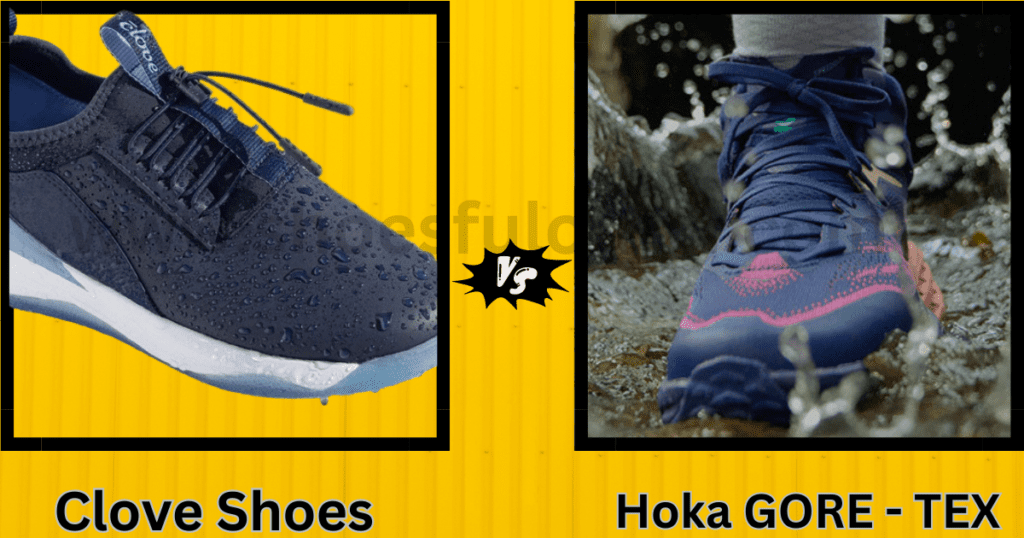
When it comes to waterproofness, it’s important to consider the specific models and variations within the Clove and Hoka shoe lines. While both brands offer a range of options, not all of their models may have waterproof features.
Let’s delve into the waterproofness of Clove and Hoka shoes and explore their respective offerings.
Clove Shoes
As I discussed above, Clove shoes are primarily designed for the needs of nurses and healthcare professionals, prioritizing comfort, support, and functionality.
In general, Clove shoes are not explicitly marketed as waterproof.
The focus of the brand is on providing lightweight, flexible, and breathable footwear to ensure all-day comfort for those working long hours on their feet.
The materials used in Clove shoes, such as mesh uppers and synthetic overlays, are chosen for their breathability and durability rather than waterproof properties.
Therefore, if you require waterproof shoes for specific activities or environments, I advise you to explore other options or consider additional waterproofing treatments.
Hoka Shoes
Hoka shoes offer a broader range of models designed for various activities, including running, hiking, and trail running. While not all Hoka shoes are explicitly waterproof, the brand does offer specific models that incorporate waterproof features to cater to different needs.
These models are typically labeled as “GORE-TEX” or “waterproof” in their product names or descriptions.
GORE-TEX
GORE-TEX is a well-known brand that provides waterproof and breathable materials.
Hoka collaborates with GORE-TEX to integrate their technology into select shoe models, offering protection against water and wet conditions.
These waterproof Hoka shoes are made with a waterproof membrane that keeps away water from entering the shoe while it also allows moisture to escape, which helps to keep your feet dry and comfortable.
Important Note
It’s important to note that the waterproofness of Hoka shoes is generally focused on providing protection against light to moderate rain, splashes, and wet conditions encountered during outdoor activities.
However, they may not be suitable for prolonged submersion or extreme wet environments.
Additionally, the waterproofness of Hoka shoes can vary between models, so it’s essential to carefully review the product descriptions or consult with the manufacturer or retailer to ensure you select the appropriate waterproof model for your intended use.
Style And Aesthetics: Clove Vs Hoka
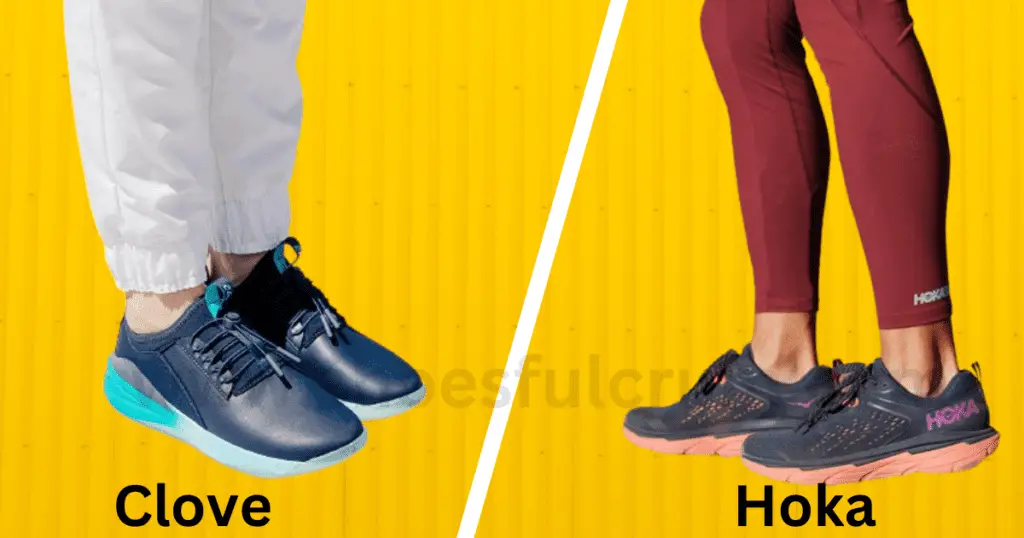
Both Clove and Hoka offer unique design choices that cater to different preferences and fashion sensibilities. The style of a shoe can play a significant role in enhancing one’s overall experience and confidence while wearing them.
Let’s explore the style and design approaches of both brands.
Clove Shoes
Clove shoes are known for their minimalist and sleek design, which is focused on functionality and natural movement.
In my experience, Clove shoes have a modern and understated aesthetic appeal. They prioritize simplicity and clean lines, which result in a versatile and timeless look.
The overall design of Clove shoes tends to be streamlined, with minimal branding and embellishments. This minimalist approach allows the shoes to blend seamlessly with various outfits and styles, making them suitable for both casual and active wear.
Variety Of Color Options
Additionally, Clove offers a variety of color options to suit different preferences. From neutral tones like black, white, and gray to vibrant and bold hues, there is a wide range of colors available.
Whether you prefer a classic and subtle look or want to make a statement with a pop of color, Clove has options to cater to your personal style.
This variety of color choices allows you to express your individuality and match your shoes with your outfit or mood.
Hoka Shoes
On the other hand, Hoka takes a slightly different approach to style and aesthetics.
Hoka’s design philosophy revolves around providing maximum cushioning and support while maintaining a distinctive and recognizable look.
Hoka shoes often feature bold and dynamic designs with a larger midsole and unique shapes.
This design approach not only enhances cushioning and comfort but also creates a visual impact.
Variety Of Color Options
Hoka offers a wide range of color and design options to cater to different preferences. From vibrant and eye-catching color combinations to more subdued and classic tones, Hoka provides choices for various style preferences.
Whether you prefer a more traditional look or want to stand out with vibrant and expressive colors, Hoka offers a diverse range of options to suit your style.
Aesthetics
Both Clove and Hoka recognize the importance of aesthetics in shoes and strive to provide appealing designs that complement their respective brand identities.
The design choices of both brands are driven by their focus on functionality and performance while still considering the visual appeal of the shoes.
Pros And Cons
Both shoes have the following pros and cons.
Clove
| Pros | Cons |
|---|---|
| Lightweight | Minimal Cushioning |
| Flexibility | Limited Arch Support |
| Natural Movement | Narrow Fit |
| Durability | |
| Comfort | |
| Stylish Design | |
| Breathability |
Hoka
| Pros | Cons |
|---|---|
| Ample Cushioning | Heavier |
| Shock Absorption | Less Ground Feel |
| Supportive | Less Breathable |
| Versatile | |
| Durable | |
| Wide Range of Styles | |
| Good Traction |
Conclusion
After this detailed comparison of Clove Vs Hoka, I can confidently say that now you will be very much satisfied with both brands’ shoes and both Clove and Hoka offer unique features and benefits.
Clove shoes, with their minimalist design and focus on foot flexibility, provide a lightweight and natural feel, making them suitable for running, among other activities. On the other hand, Hoka shoes prioritize cushioning and support, particularly for long-distance running, with their innovative midsole technology and rocker geometry.
Frequently Asked Questions
Are Clove shoes appropriate for running?
Because of their lightweight and flexible construction, Clove shoes can be used for running. However, it is critical to analyze your unique running requirements and gradually convert them into Clove shoes.
Do Hoka sneakers provide adequate cushioning?
Yes, Hoka shoes are well-known for their generous cushioning, which provides great shock absorption and comfort, especially for long-distance running and impact-intensive activities.
Are Clove shoes waterproof?
Clove shoes are not typically promoted as waterproof. They place a premium on breathability and comfort. If you need waterproof shoes, you should look at different possibilities or consider further treatments.
Do Hoka shoes come in a wide size?
Hoka shoes come in a variety of widths to accommodate different foot sizes and shapes. Some variants are available in broader widths, allowing for a more comfortable fit.
Are Clove shoes appropriate for persons who have high arches?
Clove shoes are often supportive and pleasant for people with high arches. Personal comfort may differ, so it’s best to try them on to assure a correct fit.
Can Hoka shoes be worn when hiking?
Yes, Hoka produces hiking-specific models that provide the required support, cushioning, and grip for outdoor experiences on a variety of terrains.
How should I care for my Clove shoes?
Clove shoes can be cleaned using a gentle soap, warm water, and a soft brush. It is advised that you follow the manufacturer’s cleaning guidelines.
Are Hoka shoes appropriate for persons who have plantar fasciitis?
Hoka shoes are frequently recommended for people who have plantar fasciitis because of their superior cushioning and support, which can help relieve foot pain and discomfort.
Can I wear Clove shoes when standing for long periods of time at work?
Yes, Clove shoes are meant to meet the needs of professionals who spend long periods of time on their feet, such as nurses. They provide comfort, support, and durability to aid in the reduction of foot fatigue.
Are Hoka shoes appropriate for speed training?
Hoka provides models built exclusively for speed and performance, with lighter materials and sensitive cushioning, making them appropriate for speed training and running sessions.

About Author:
Hammad Qadir is a passionate fashion blogger with a passion for shoes, spanning over seven years. As the driving force behind “ShoesFulcrum.com” he offers unparalleled insights into iconic brands like Crocs, Hey Dude, and Birkenstock. With a collection of a hundred pairs, his expertise extends to industry giants like Nike and Adidas. Through insightful reviews and recommendations, Hammad guides readers to their perfect pair. Hammad’s knack for differentiating between brands and guiding readers makes him a trusted authority. Active on Quora, Reddit, Medium, LinkedIn, and Pinterest, he fosters engagement and shares exclusive content. Read more...

